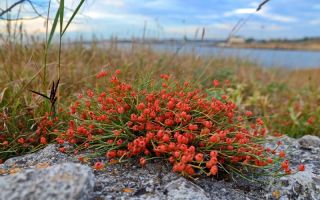Content
- 1 What does the ephedra plant look like and where does it grow?
- 2 The chemical composition of ephedra
- 3 Useful properties of Crimean ephedra, horsetail
- 4 Preparation and application methods
- 5 The use of the herb ephedra two-spike, horsetail in medicine
- 6 Contraindications to the use of ephedra and side effects
- 7 Collection and procurement
- 8 When is ephedra allowed in Russia
- 9 Conclusion
Ephedra grows in many regions of Russia and is widespread throughout Eurasia. The culture has a high medicinal value, but requires careful use.
What does the ephedra plant look like and where does it grow?
Ephedra, or Ephedra, is a perennial plant from the Ephedra family. It is a shrub or small tree 1.5-5 m high. It has green, jointed branches and reduced leaves only about 2 mm long. In June and July, it produces yellow dioecious flowers. Male buds surround the staminate column, while female buds are clustered in small inflorescences. From July until the beginning of autumn, the plant produces cones with seeds inside.

Ephedra is represented by numerous species and is widespread in southern Europe, North America, Asia and South America. The plant prefers a warm, dry climate with moderate humidity.
Where does the Ephedra plant grow in Russia
On the territory of Russia, you can mainly find two-spike ephedra, horsetail and Crimean ephedra. The culture is widespread in the Caucasus and the Crimea, in Western Siberia and in Altai, in the mountainous regions of the Tien Shan. In the photo of the ephedra plant, it can be seen that it usually grows in groups, covering sandy massifs and hillsides, choosing stony soils and limestones. Sometimes you can find ephedra at an altitude of 1800 m above sea level.
Where does ephedra grow in Crimea
Ephedra in Crimea is especially common near Sevastopol. Thickets of ephedra plants can be seen in the area of Balaklava and Cape Fiolent, in Chersonesos.
The chemical composition of ephedra
In medicine, green shoots of horsetail or two-spike ephedra are valued, they contain a large amount of valuable substances. In particular, the branches of the plant contain:
- ascorbic acid;
- ephedrine and pseudoephedrine;
- tannins;
- dyes.
Alkaloids in the herb occupy at least 1.6% of the total composition, and 65% of them are represented by ephedrine. Due to this, the plant has strong medicinal properties, but becomes very dangerous in case of an overdose.
Useful properties of Crimean ephedra, horsetail
Horsetail, dvukhshchevaya and Crimean ephedra have numerous valuable properties. When applied carefully, the plant:
- relaxes the smooth muscles of the respiratory organs and helps with bronchial spasms;
- promotes the rapid cure of pneumonia;
- relieves rhinitis and pharyngitis;
- relieves motion sickness symptoms;
- benefits asthma and whooping cough;
- stops bleeding;
- increases blood pressure;
- accelerates recovery from hay fever;
- relieves irritation and redness with urticaria.
The plant is used for gastrointestinal ailments and joint diseases.Ephedra has anti-inflammatory and tonic properties, and is beneficial for depression and anxiety disorders.
Preparation and application methods
On the basis of shoots of horsetail and two-spike ephedra, you can make healthy teas, water decoctions and strong tinctures. There are several schemes for the preparation of medicinal raw materials.
Ephedra tincture
An alcoholic tincture of the ephedra plant is used externally for hematomas and joint diseases. It is prepared according to this recipe:
- 20 g of dry raw materials are crushed and poured into a glass vessel;
- pour 500 ml of high-quality vodka;
- close with a lid and put away in a dark place for three weeks;
- passed through cheesecloth for filtration.
In case of bruises, sprains, rheumatism and arthritis, sore spots are rubbed with a small amount of the drug.
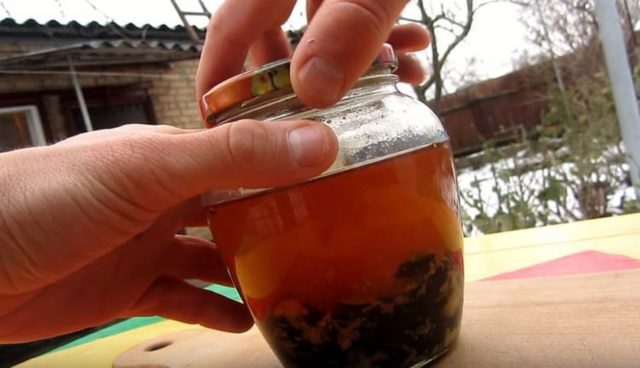
Decoction
A useful decoction can be prepared on the basis of ephedra branches. They do it like this:
- 10 g of dry grass is crushed and poured into an enamel pan;
- pour 600 ml of water;
- boil over low heat until half of the liquid remains;
- removed from the stove and cooled under the lid.
You need to take a decoction of the plant in a large spoon three times a day. It brings benefits in chronic hypotension and severe cough.

Infusion
Dry ephedra is suitable for preparing a quick water infusion. The recipe looks like this:
- harvested stems are crushed in a volume of 2 g;
- pour a glass of hot water;
- close with a lid and insist until cool.
The resulting product must be divided into 3-4 servings and taken in equal amounts throughout the day. The infusion helps well with colds, has an antipyretic effect and relieves the unpleasant symptoms of pharyngitis and rhinitis.
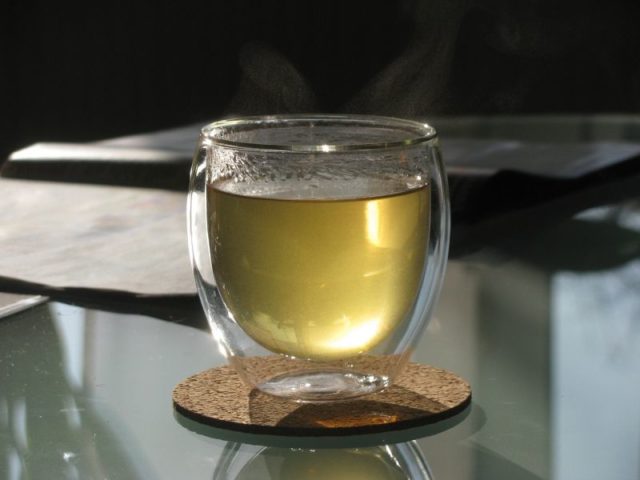
Tea
With chronic asthma, weak immunity and cough, you can take tea on ephedra stalks. The cooking recipe looks like this:
- the grass is crushed in a volume of 5 g and 500 ml of hot water is poured into a teapot;
- closed for only 15 minutes;
- filter through a fine sieve or folded gauze to remove sediment.
You need to drink tea warm in between meals up to three times a day. Since the product has a high concentration of active substances, it is not taken in full cups, but only in half a glass.
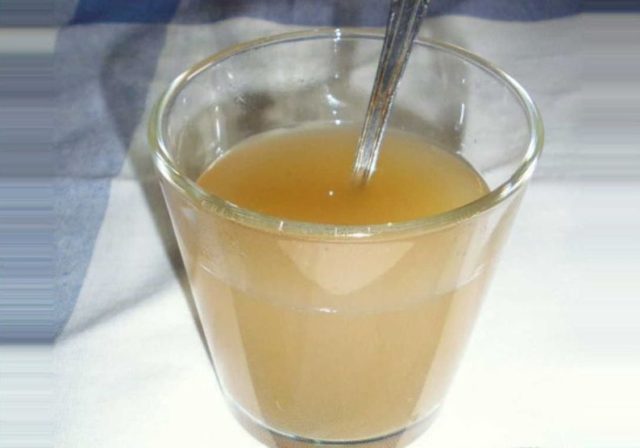
The use of the herb ephedra two-spike, horsetail in medicine
Traditional medicine actively uses dried young shoots of the medicinal plant ephedra. Funds based on them have a good effect in a number of acute and chronic diseases. In particular, they are used:
- with rheumatism and arthritis;
- with a stomach ulcer;
- with dysentery and diarrhea;
- for allergies and hives;
- with bronchitis, asthma, pneumonia and whooping cough;
- with sea and serum sickness;
- under reduced pressure;
- with frequent nosebleeds;
- with severe chronic rhinitis;
- for malaria and altitude sickness.
With hypotension
With chronically reduced pressure, the infusion on the shoots of the plant is beneficial. They do it like this:
- dry raw materials are crushed to a powder state;
- measure 1.5 g and pour 250 ml of boiling water into a thermos;
- stand under a closed lid for two hours;
- filtered through cheesecloth.
You need to drink the infusion shortly before meals three times a day, 80 ml.
With depression
The healing properties of ephedra help with constant fatigue, drowsiness and lack of energy. You can prepare the following infusion:
- dried plant stems are crushed with a mortar or with a coffee grinder;
- measure 2 g of powder and pour in 100 ml of fresh boiling water;
- insist under the lid for an hour;
- passed through folded gauze.
You need to take a plant-based product on an empty stomach, 50 ml twice a day.
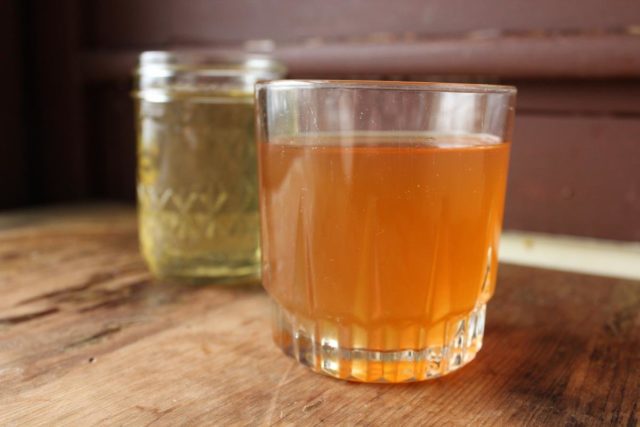
With bronchial asthma
Ephedra dry herb tea reduces the intensity of asthmatic attacks and improves the condition of chronic patients. The medicine is done like this:
- crush the raw materials of the plant in the volume of two small spoons;
- pour 1 liter of water with a temperature of about 80 ° C;
- keep in a closed kettle or thermos for 15 minutes;
- filter the hot drink through cheesecloth.
You need to drink the product 150 ml three times a day. Tea not only makes breathing easier, but also normalizes blood pressure and restores energy.
With an ulcer
The ephedra plant in small doses has a soothing effect on irritated mucous membranes and helps to restore them. For peptic ulcer disease, the following decoction is prepared:
- 20 g of crushed raw materials are poured into 1.2 liters of hot water;
- boil over low heat until half of the liquid evaporates;
- removed from the stove and cooled.
The filtered broth is taken 15 ml three times a day.
Contraindications to the use of ephedra and side effects
The effect of ephedra on the body can be not only beneficial but also harmful. Ephedra has toxic properties, and you must refuse to use it:
- with atherosclerosis and cardiosclerosis;
- with diabetes mellitus;
- with hypertension;
- in case of disorders in the thyroid gland;
- with increased nervousness, hysteria and a tendency to nervous seizures;
- during pregnancy;
- during breastfeeding.
Plant-based products are not offered to children under 14 years of age.
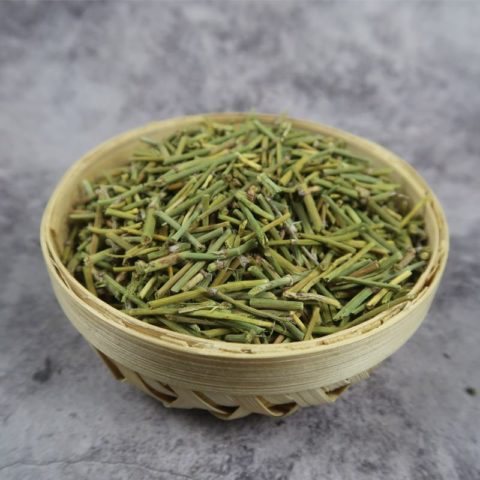
In case of an overdose of ephedra-based drugs, side effects develop. These include:
- nausea, slight trembling and vomiting;
- palpitations, dizziness, migraines, and sternum pain;
- a sharp increase in blood pressure;
- delay in urination;
- hyperhidrosis;
- insomnia and nervous agitation;
- skin rashes;
- fear of death.
Attention! If symptoms of an overdose appear, you should immediately stop taking ephedra-based drugs. If the condition does not improve, you should see a doctor.
Collection and procurement
Harvesting green shoots of ephedra is carried out in late winter or early spring, when the concentration of valuable alkaloids in the plant reaches its maximum level. It is necessary to collect twigs up to 1 cm in diameter, which have not yet had time to overgrow with a hard bark. Medicinal raw materials are carefully cut with sharply sharpened scissors or shears.
The twigs are dried in the standard way - in a warm and well-ventilated place away from sunlight. Properly harvested shoots should break easily when pressed, but retain their original green color. Keep them in a paper bag in a dark cabinet at room temperature.
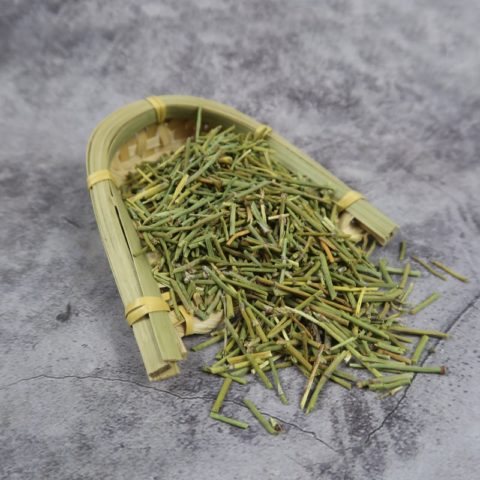
When is ephedra allowed in Russia
Medicinal ephedra belongs to the category of plants containing substances with narcotic and psychotropic effects. The herb has a strong effect on the human brain and on the cardiovascular system, is prohibited for uncontrolled use, and in case of a volume overdose it can even lead to death.
For this reason, the cultivation of decorative ephedra is limited by law - it cannot be cultivated in large quantities. However, Government Decree No. 934 allows private cultivation of up to ten bushes of plants.
Conclusion
Ephedra grows on the territory of Russia in the Crimea and in the mountainous regions of Western Siberia. The herb has strong medicinal properties, but at the same time is very poisonous. Therefore, when growing it, it is necessary to adhere to the legislation, and it is allowed to accept funds based on ephedra only in very small quantities.

